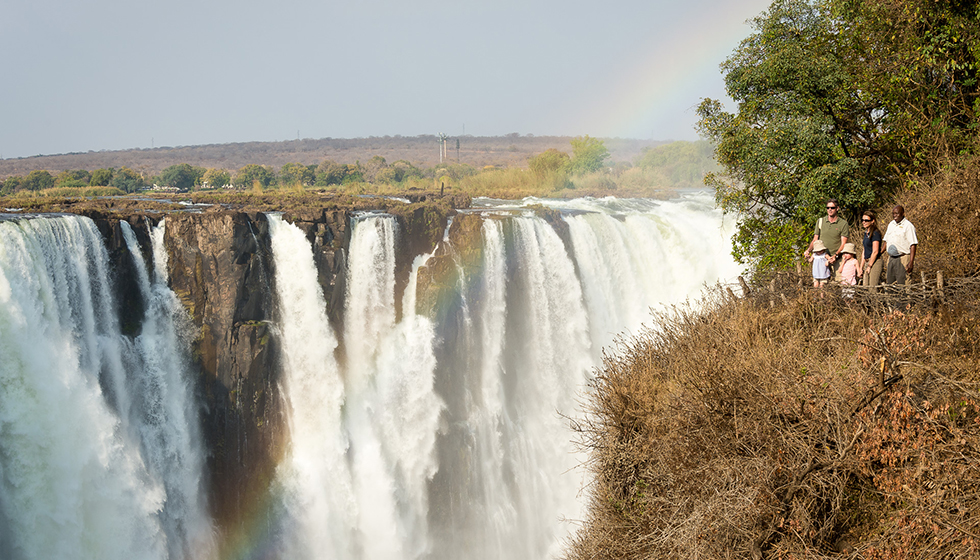Walk the Falls
This is a very wet experience particularly during and after the rains. Depending on where you are staying you can also cross over to Zimbabwe or Zambia to view the falls, but you’ll need to negotiateimmigration which can take a bit of time and is fairly typical of a brush with African bureaucracy – disorganised and a bit of a pain.
White Water Rafting
These are all day or half day trips and in the dry season start right under the falls. When the river is high, they start further down. Depending on the time of year, it can be a fun day out with a few thrills, or a hair-raising experience with a lot of swims. It is a steep climb down into the gorge and a very steep climb out – although there is now a cable car on the Zambian side, but it is not always working.
Microlite over the Victoria Falls
This is a 15 minute flight and some of the magic is taken out by the fact that it is a bit like queuing up for a fair ground attraction and the poor pilots just go up and down every 15 minutes. It is however an exciting way to see the Falls and really appreciate how huge they are, but also how narrow the chasm that the water falls into. You can also see where over 1000’s of years the Falls started. You are linked into the pilot who gives information on the Falls and then you fly back along the river, looking down at hippos.
Helicopter flight
Here you fly over the falls and then fly down in the gorge up to the falls which is quite spectacular. As with the microlite flights, you can do 15 minutes or 30 minute flights. You have to be aware that in the helicopter, the best view is in the front seat and there were complaints when we were there that people could not see well out of the back seats.
Livingstone Island (Zambia only)
Lying right as the giant Zambezi plummets over the Falls, there can be few places which provide such unusual and special access to one of the World’s Wonders. Visit for high-tea, lunch or during the full moon to see the lunar rainbow. You can also access the daring Devil’s Pool if you fancy a dip on the very edge of the waterfall…not for the faint of heart.
Other activities you might be interested in:
- Elephant back safaris – whole day or half a day in Zimbabwe and Zambia
- Quad biking tours in Zambia
- Walking in Musi o Tunya National Park
- Walking with Lions in Zimbabwe and Zambia


